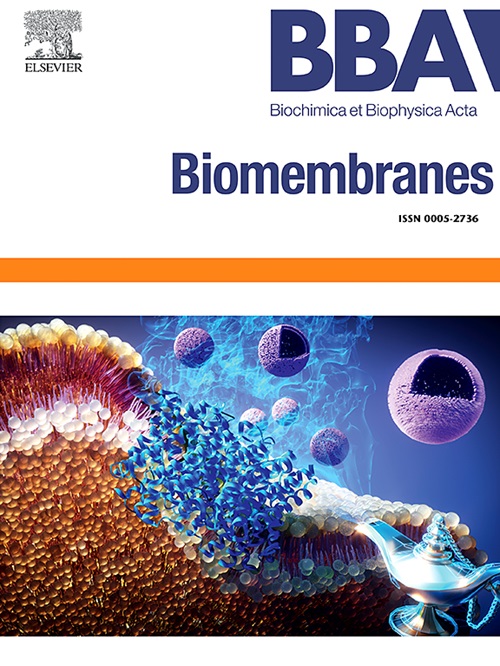Amino acids critical for lipid/s-interaction at the lipid-water-interface of TRPV5/TRPV6 remain different during vertebrate radiation: Relevance in cancer, bone disorders and other pathophysiologies
IF 2.5
3区 生物学
Q3 BIOCHEMISTRY & MOLECULAR BIOLOGY
引用次数: 0
Abstract
TRPV5 and TRPV6 are members of the TRP superfamily of ion channels and are present in almost all vertebrates as linked-genes with high homology and functional similarities. Abnormalities in the regulation or function of these two channels cause multiple pathological conditions, making these highly relevant for several diseases and pharmacological applications. In this context, how these two channels differ from each other is largely unknown. Here we analysed ∼250 protein sequences from vertebrates and critically analysed the conservation of signature motifs, such as different domains, TM-regions, loop-regions, cholesterol-binding regions and lipid-water-interface (LWI) regions. We demonstrate the subtle differences in the motifs and residues that are present at the LWI in TRPV5 and TRPV6. The ratio of hydrophobic-to-hydrophilic residues (but not of positive-to-negative residues) remains conserved for TRPV5 and TRPV6 throughout the vertebrate evolution. We also found motifs where cholesterol and/or sphingolipid can interact with TRPV5 and TRPV6 yet with different energies, both in open- and close-conformation. Accordingly, experimental evidence suggest that partial depletion of membrane cholesterol lowers the agonist-mediated opening of TRPV6, confirming the importance of membrane cholesterol for channel function. Further analysis of somatic mutations suggests that the specific inner LWI regions of TRPV5 (first 3) and TRPV6 (first 5) impose mutational hot-spots that are linked with different cancers. These findings may have broad significance in designing pharmacological agents for targeting TRPV5 and TRPV6 separately or simultaneously.

在脊椎动物辐射期间,TRPV5/TRPV6脂质-水界面脂质/s-相互作用的关键氨基酸保持不同:与癌症,骨疾病和其他病理生理相关。
TRPV5和TRPV6是TRP离子通道超家族的成员,几乎存在于所有脊椎动物中,具有高度同源性和功能相似性。这两个通道的调节或功能异常导致多种病理状况,使其与多种疾病和药理应用高度相关。在这种情况下,这两个渠道彼此之间的差异在很大程度上是未知的。在这里,我们分析了来自脊椎动物的约250个蛋白质序列,并批判性地分析了特征基序的保守性,如不同结构域、tm区、环区、胆固醇结合区和脂-水界面(LWI)区。我们展示了TRPV5和TRPV6在LWI上存在的基序和残基的细微差异。在整个脊椎动物进化过程中,TRPV5和TRPV6的亲疏水残基比例(而非正负残基比例)保持保守。我们还发现了胆固醇和/或鞘脂可以与TRPV5和TRPV6相互作用的基序,但具有不同的能量,包括开放构象和封闭构象。因此,实验证据表明,膜胆固醇的部分消耗降低了激动剂介导的TRPV6开放,证实了膜胆固醇对通道功能的重要性。对体细胞突变的进一步分析表明,TRPV5(前3)和TRPV6(前5)特定的LWI内区域存在与不同癌症相关的突变热点。这些发现可能对单独或同时靶向TRPV5和TRPV6的药物设计具有广泛的意义。
本文章由计算机程序翻译,如有差异,请以英文原文为准。
求助全文
约1分钟内获得全文
求助全文
来源期刊

Biochimica et biophysica acta. Biomembranes
生物-生化与分子生物学
CiteScore
8.20
自引率
5.90%
发文量
175
审稿时长
2.3 months
期刊介绍:
BBA Biomembranes has its main focus on membrane structure, function and biomolecular organization, membrane proteins, receptors, channels and anchors, fluidity and composition, model membranes and liposomes, membrane surface studies and ligand interactions, transport studies, and membrane dynamics.
 求助内容:
求助内容: 应助结果提醒方式:
应助结果提醒方式:


